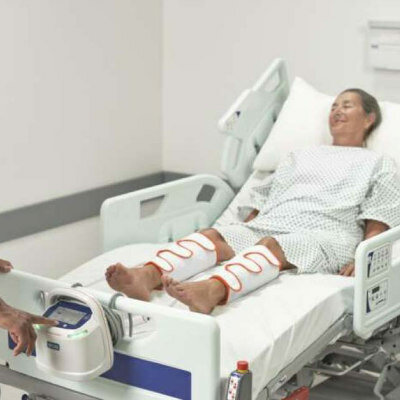Breakthrough Tech Pinpoints Seizure-Originating Brain Regions and Predicts Outcome Before Surgery
|
By HospiMedica International staff writers Posted on 13 May 2022 |

Fresh techniques to aid seizure diagnosis and surgical planning stand to benefit millions of epilepsy patients, but the path to progress has been slow and challenging. Researchers have now introduced a novel network analysis technology that uses minimally invasive resting state electrophysiological recordings to localize seizure onset brain regions and predict seizure outcomes.
In current practice, prior to any surgical removal of tissues, clinicians often drill holes into the skull to place recording electrodes atop the brain. The electrodes record electrical activity in the brain over the course of days or weeks, however long it takes for seizure(s) to materialize, to inform of where seizure(s) are taking place. While necessary, this practice can be time-consuming, costly, and uncomfortable for patients to stay in hospital for days to weeks. The novel network analysis technique developed by researchers at Carnegie Mellon University (Pittsburgh, PA, USA) can pinpoint seizure-originating brain regions and predict a patient’s seizure outcome before surgery, using only 10 minutes of resting state recordings without the need to wait for seizures to occur.
The technique extracts information flow across all recording electrodes and makes a prediction based on the different levels of information flow. The researchers discovered that the information flow from non-seizure generating tissue to seizure originating tissue is much larger than the inverse direction, and the notably greater difference in information flow often leads to a seizure-free outcome. Once implemented, this approach could have a major impact to inform clinicians and families if a patient should pursue a surgery and what the likelihood of surgical success would be.
“In a group of 27 patients, our accuracy of localizing seizure onset brain regions, was 88%, which is a fascinating result,” explained Bin He, professor of biomedical engineering at Carnegie Mellon University. “We use machine learning and network analysis to analyze a 10-minute resting state recording to predict where the seizure will come out. While this method is still invasive, it is to a significantly decreased degree, because we’ve taken the recording timeline from multiple days or even weeks down to 10 minutes.”
“In the same group of patients, our accuracy of predicting their seizure outcome, or the possibility of becoming seizure-free post-surgery, was 92%,” added Bin He. “Eventually, this type of data could guide patients toward or away from surgery, and it is information that is not readily available today.”
Related Links:
Carnegie Mellon University
Latest Surgical Techniques News
- Robotic Assistant Delivers Ultra-Precision Injections with Rapid Setup Times
- Minimally Invasive Endoscopic Surgery Improves Severe Stroke Outcomes
- Novel Glue Prevents Complications After Breast Cancer Surgery
- Breakthrough Brain Implant Enables Safer and More Precise Drug Delivery
- Bioadhesive Sponge Stops Uncontrolled Internal Bleeding During Surgery
- Revolutionary Nano Bone Material to Accelerate Surgery and Healing
- Superior Orthopedic Implants Combat Infections and Quicken Healing After Surgery
- Laser-Based Technique Eliminates Pancreatic Tumors While Protecting Healthy Tissue
- Surgical Treatment of Severe Carotid Artery Stenosis Benefits Blood-Brain Barrier
- Revolutionary Reusable Duodenoscope Introduces 68-Minute Sterilization
- World's First Transcatheter Smart Implant Monitors and Treats Congestion in Heart Failure
- Hybrid Endoscope Marks Breakthrough in Surgical Visualization
- Robot-Assisted Bronchoscope Diagnoses Tiniest and Hardest to Reach Lung Tumors
- Diamond-Titanium Device Paves Way for Smart Implants that Warn of Disease Progression
- 3D Printable Bio-Active Glass Could Serve as Bone Replacement Material
- Spider-Inspired Magnetic Soft Robots to Perform Minimally Invasive GI Tract Procedures
Channels
Critical Care
view channel
Wearable Patch for Early Skin Cancer Detection to Reduce Unnecessary Biopsies
Skin cancer remains one of the most dangerous and common cancers worldwide, with early detection crucial for improving survival rates. Traditional diagnostic methods—visual inspections, imaging, and biopsies—can... Read more
Pulse Oximeter Index Offers Non-Invasive Guides for Fluid Therapy
In patients with acute circulatory failure, deciding whether to administer intravenous fluids is often a life-or-death decision. Too little fluid can leave organs underperfused, while too much can cause... Read morePatient Care
view channel
Revolutionary Automatic IV-Line Flushing Device to Enhance Infusion Care
More than 80% of in-hospital patients receive intravenous (IV) therapy. Every dose of IV medicine delivered in a small volume (<250 mL) infusion bag should be followed by subsequent flushing to ensure... Read more
VR Training Tool Combats Contamination of Portable Medical Equipment
Healthcare-associated infections (HAIs) impact one in every 31 patients, cause nearly 100,000 deaths each year, and cost USD 28.4 billion in direct medical expenses. Notably, up to 75% of these infections... Read more
Portable Biosensor Platform to Reduce Hospital-Acquired Infections
Approximately 4 million patients in the European Union acquire healthcare-associated infections (HAIs) or nosocomial infections each year, with around 37,000 deaths directly resulting from these infections,... Read moreFirst-Of-Its-Kind Portable Germicidal Light Technology Disinfects High-Touch Clinical Surfaces in Seconds
Reducing healthcare-acquired infections (HAIs) remains a pressing issue within global healthcare systems. In the United States alone, 1.7 million patients contract HAIs annually, leading to approximately... Read moreHealth IT
view channel
Printable Molecule-Selective Nanoparticles Enable Mass Production of Wearable Biosensors
The future of medicine is likely to focus on the personalization of healthcare—understanding exactly what an individual requires and delivering the appropriate combination of nutrients, metabolites, and... Read moreBusiness
view channel
Philips and Masimo Partner to Advance Patient Monitoring Measurement Technologies
Royal Philips (Amsterdam, Netherlands) and Masimo (Irvine, California, USA) have renewed their multi-year strategic collaboration, combining Philips’ expertise in patient monitoring with Masimo’s noninvasive... Read more
B. Braun Acquires Digital Microsurgery Company True Digital Surgery
The high-end microsurgery market in neurosurgery, spine, and ENT is undergoing a significant transformation. Traditional analog microscopes are giving way to digital exoscopes, which provide improved visualization,... Read more
CMEF 2025 to Promote Holistic and High-Quality Development of Medical and Health Industry
The 92nd China International Medical Equipment Fair (CMEF 2025) Autumn Exhibition is scheduled to be held from September 26 to 29 at the China Import and Export Fair Complex (Canton Fair Complex) in Guangzhou.... Read more














